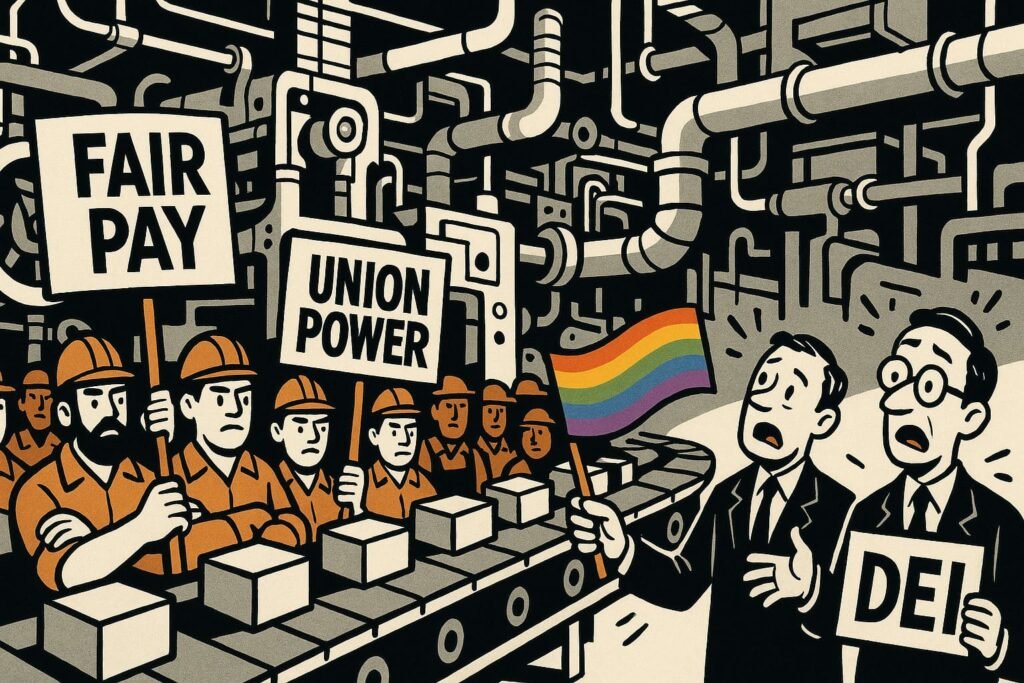Labor Strikes Explained – Activism Beyond Identity Politics
When workers walk out, no diversity slogan can keep the factory running.
While modern activism obsesses over race, gender, and pronouns, the old engine of protest never went away: workers demanding better pay, safer conditions, and a fair share of the pie. From Amazon warehouses to Hollywood writers’ rooms, strikes remind us that nothing terrifies bosses and politicians more than labour standing together.
Table of contents
What Are Labor Strikes?
At its core, a strike is simple: workers stop working until demands are met. Unlike hashtag campaigns or symbolic marches, strikes hit the bottom line. No profits, no production, no business as usual.
Strikes are the original activism: direct, material, and costly for those in power.
How They Show Up Today
- Amazon & Starbucks → warehouse and service workers staging walkouts over wages, union recognition, and conditions.
- Hollywood writers & actors → shutting down TV and film production in 2023 until studios caved on pay and AI protections.
- Railroad and transport strikes → paralyzing national economies, forcing governments into negotiations.
- Public sector walkouts → teachers, nurses, and healthcare staff reminding politicians that slogans don’t treat patients or teach kids.
Unlike social media storms, these actions can’t be ignored.
Who Benefits?
- Workers → direct leverage: solidarity turns individual weakness into collective power.
- Unions → renewed relevance after decades of decline.
- Society at large → wage gains and labour protections historically come from strike pressure, not corporate goodwill.
The Consequences
Labor strikes cut through woke distraction. Instead of identity categories, they unite people on material reality: wages, hours, conditions. But that also explains why elites prefer identity politics — it divides, while class solidarity threatens real power.
Risks remain:
- Public opinion can turn if strikes drag on.
- Politicians often side with corporate donors.
- Automation and globalisation limit leverage.
Still, strikes remind us of a timeless truth: without labour, capital is just paper.
Conclusion
Labor strikes are activism in its rawest form — not tweets, not slogans, but bodies off the job and profits on hold. While identity-based activism dominates headlines, strikes remain the most feared weapon in politics. If you want to see what really makes the system sweat, don’t look at hashtags. Look at empty assembly lines.
👉 Want the bigger picture? Explore our full Activism Explainer Hub to see how movements, tactics, and ideologies shape modern politics.
FAQ
What is a labor strike?
A collective action where workers stop working to pressure employers for better pay, conditions, or recognition.
Are strikes still effective today?
Yes. From Hollywood to Amazon, strikes have recently won wage increases, protections, and union recognition.
How are strikes different from digital activism?
Strikes disrupt production and profit directly, while digital activism mostly affects reputation and narratives.
Why are strikes less visible in media?
Because they threaten elites economically, not just symbolically. Identity movements are safer to amplify.
Do strikes only help union members?
No. Historically, union gains on wages and conditions often spill over into wider society.



